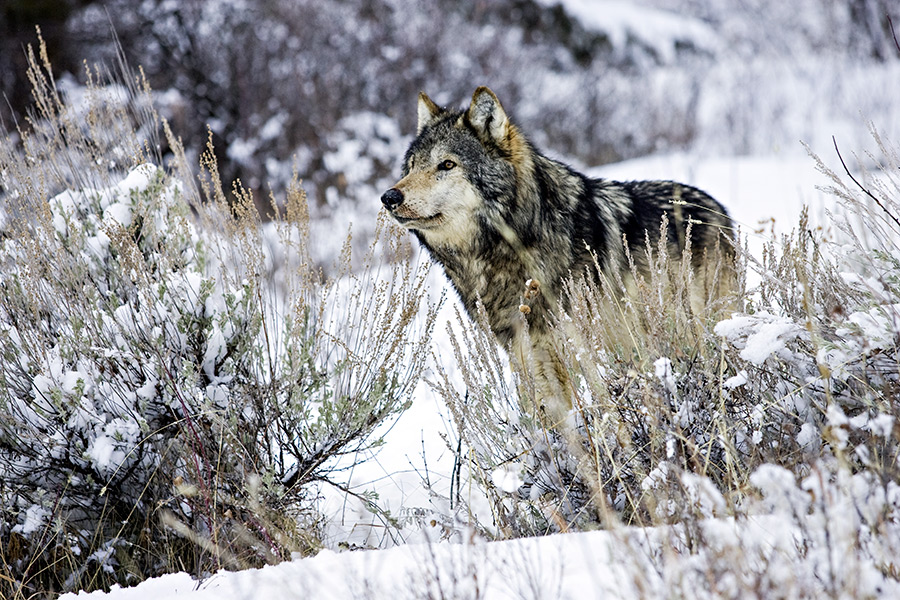Faced with a growing chorus of public support for expanding opportunities to hunt and trap wolves in northwest Montana, wildlife officials are proposing an extended season that will allow hunters to harvest twice as many animals as current rules permit.
It’s the latest step to temper a spirited debate in this corner of the state, which harbors a robust wolf population and is also home to a groundswell of hunters and trappers publicly calling for reducing the canids’ numbers through lethal measures.
Wolves are a perennial source of contention, but rally cries for fewer wolves on the landscape have risen to a crescendo in recent years as the state assumes management over a species delisted from the Endangered Species Act in 2011, while hunters report meager harvests of deer, elk and moose.
In response to those concerns, wildlife officials with Montana Fish, Wildlife and Parks (FWP) Region 1, whose jurisdiction encompasses Flathead, Lincoln, Sanders, and Lake counties, this week recommended proposed changes to the wolf hunting and trapping seasons, which the state Fish and Wildlife Commission will consider at its Feb. 13 meeting.
The proposed changes include: extending the general hunting season to begin Aug. 15 and end March 31 (currently, archery season begins Sept. 1, while general season begins Sept. 15 and ends March 15); extending trapping season to March 15 (currently, it ends Feb. 28); and increasing the individual limit to 10 wolves per person (the current individual limit is five).
According to FWP, the proposals emerged from the latest biennial season-setting process involving the review of hunting season structures for most game animals and other managed species. FWP regional staff met and took input from local communities at four meetings across northwest Montana this winter. Public comment was also received online from Dec. 5 to Jan. 27 and forwarded to commissioners and FWP staff for their consideration.
“We heard from a substantial number of people attending the public meetings throughout northwest Montana who requested additional opportunity for wolves,” FWP Regional Wildlife Manager Neil Anderson said. “Biologically, we have the wolf population to sustain additional harvest opportunity and wanted to be responsive to public input and participation.”
The issue of wolves is a heated one among some hunters in large part due to their shared diet — like hunters, wolves eat deer, elk and moose, which have experienced consecutive years of lowered population counts.
Biologists and wildlife experts with Montana FWP acknowledge that predators like wolves have an impact on ungulate populations, but say other factors contribute to fluctuating hunting harvests, including habitat changes caused by timber management and wildfire, as well as back-to-back heavy winters.
Recent population estimates peg Montana’s wolf population at about 850 animals statewide, with about 350 living in this region. The state wolf management plan allows for what officials describe as a lax hunting season as long as the population stays above a minimum 150 wolves.
If Montana were to hit that number, it would trigger a federal review by the U.S. Fish and Wildlife Service, which could return wolves to protection under the Endangered Species Act, effectively ending wolf hunting. But most of the hunters in the room encouraged state wildlife officials to manage for that minimum population objective.
During the 2018-2019 season, Montana sold 14,921 resident wolf licenses and 2,082 non-resident wolf hunting licenses. During that time, 295 wolves were killed via hunting and trapping (166 taken by hunters and 129 by trappers) while an additional 60 wolves were killed through management actions — 43 of them by wildlife officials and 17 of them by private citizens, who are allowed to kill wolves threatening livestock under a new law enacted by Senate Bill 2.
“This is the highest total harvest of wolves on record in Montana,” according to FWP officials. “Most of the increase was due to higher trapping success, primarily in Regions 1 and 2.”
The Fish and Wildlife Commission meeting on Feb. 13 in Helena will also address other season-setting proposals. The meeting will be streamed live on video to all regional FWP offices, while a live audio feed will be available at fwp.mt.gov. The meeting begins at 8:30 a.m.
